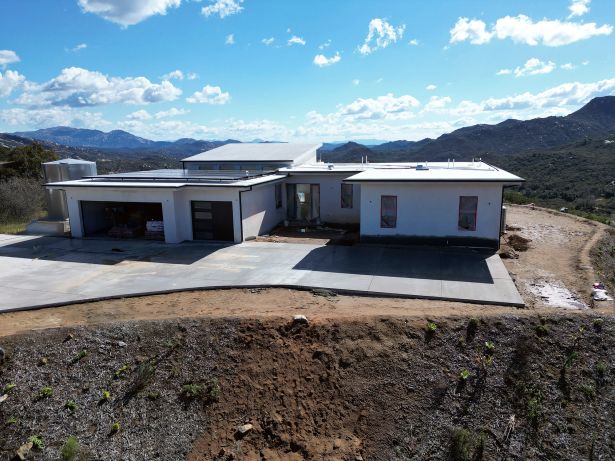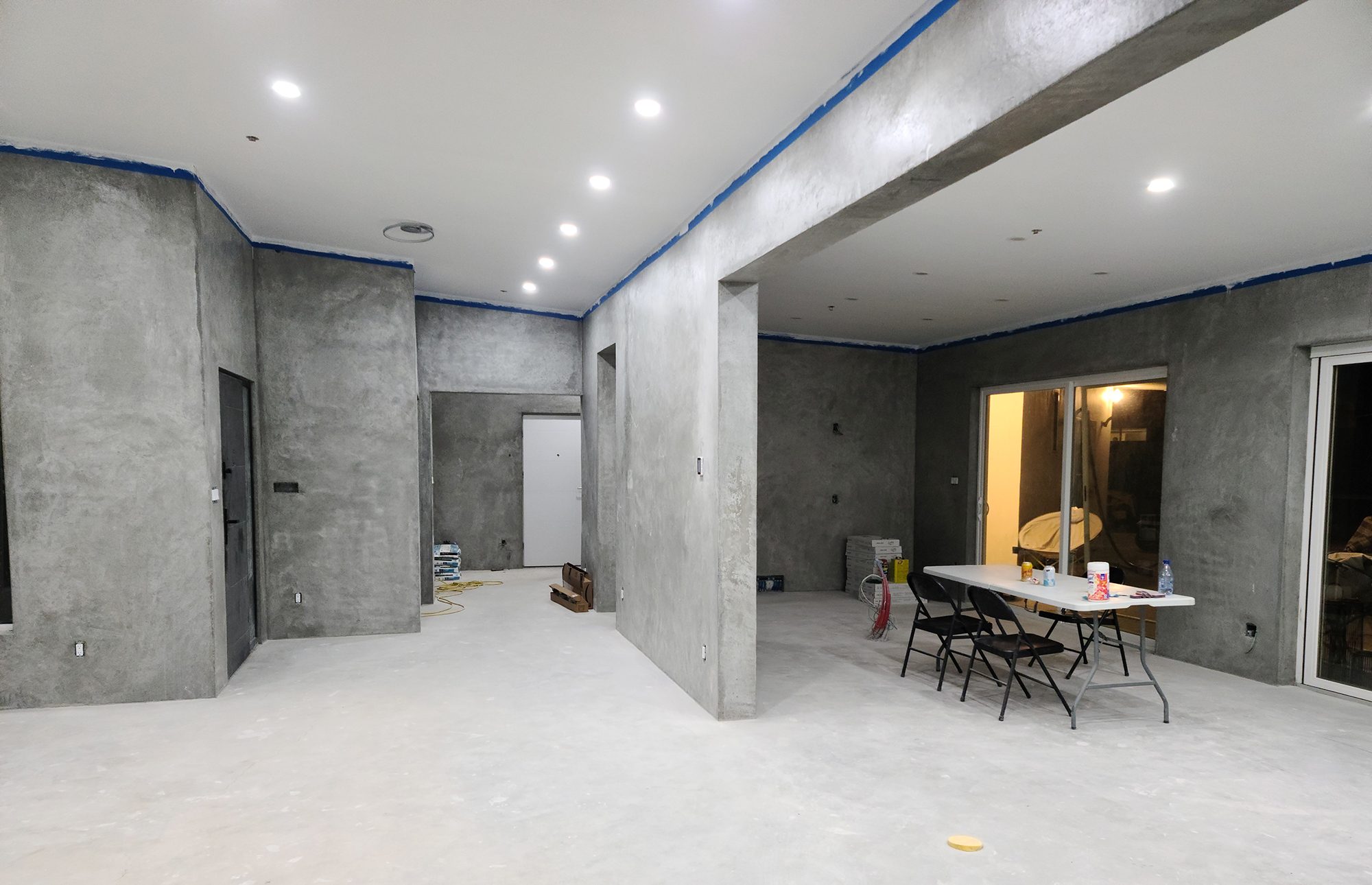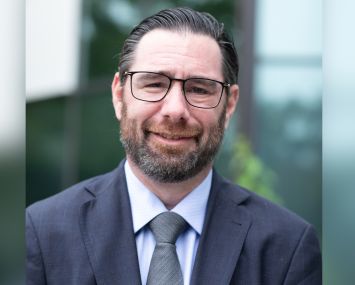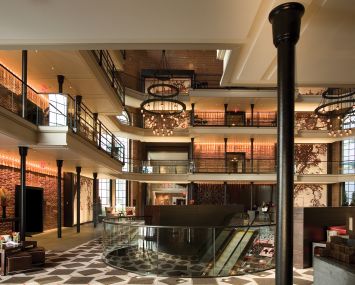RSG 3-D CEO Ken Calligar Wants to Change Homebuilding as We Know It
In the wake of the L.A. fires, RSG 3-D aims to provide a stronger and ultimately more cost-effective path for homeowners and developers.
By Nick Trombola June 3, 2025 5:56 pm
reprints
When Jean-Pierre “JP” and Laetitia Teyssier purchased their home in Santa Rosa, Calif., in 2014, they weren’t particularly worried about wildfires.
Northern California’s wine country had experienced some blazes in the past, but the Teyssiers’ neighbors assured them that fires had rarely, if ever, threatened homes in the area, much less destroyed them. The likelihood of earthquakes were far more top of mind for the French couple, who had moved to the Golden State two years previously with their two children.
Yet, on Oct. 8, 2017, a malfunctioning private electrical system near Calistoga, Calif., kindled the Tubbs Fire that ultimately killed 22 people, destroyed more than 5,600 structures and burned roughly 36,000 acres across Sonoma and Napa counties. The Teyssiers’ home was one of the buildings swallowed by the flames, three years to the day after they purchased it.
“I think most of us are under the impression that fires will occur in forested areas — we didn’t realize at the time that it could happen in neighborhoods with a lot of houses,” JP Teyssier said. “But now, when we think a little bit about how houses are built with wood, with wood fences connecting the houses, with trees, with mulch around the house, it’s pretty evident that the way of building is not adequate. It’s not appropriate for fire hazards.”

The couple decided in the aftermath that they wanted to rebuild. But once they did, would they ever truly feel safe again? The Teyssiers considered rebuilding out of wood, but were concerned of another fire tearing through their community. They thought of using brick or stone, but California’s threat of seismic events rendered that possibility moot. The couple eventually made their way to a homebuilders expo, organized to connect fire survivors with contractors, architects and advisers. They flitted from booth to booth, but found just rehashings of the familiar stick-frame techniques that U.S. builders had used for over a century.
The couple was preparing to leave, disheartened, until a booth at the end of the hall caught their eye: RSG 3-D.
The booth featured a sample of a concrete and steel panel. The interior layer of the panel was expanded polystyrene, surrounded by a proprietary steel truss, in turn sandwiched by concrete slabs. The panels could fit perfectly together into virtually any shape, the company representative told the French couple, and the material could build a home exceptionally strong and energy efficient. It would also be resistant to mold and vermin, to hurricanes and earthquakes — and, most pertinent to the couple at that moment, to fire.
RSG 3-D’s Founder and CEO is Ken Calligar, investment banking veteran and former CEO of Sionix, which designs and constructs water treatment systems. It was through Calligar’s investment work that he came across Insteel Panelmex, RSG 3-D’s Mexico-based predecessor that had quietly hummed under the radar for more than two decades. Insteel Panelmex has provided the material, which it dubbed TridiPanel, to thousands of homes and commercial developments since its founding in 1991. Realizing its potential, Calligar acquired the company and formally launched RSG 3-D in 2018.
“At the end of the day, for me it was glaringly obvious that there was a giant emergent need for resilience,” Calligar said. “If you read into what the real climate scientists think, [the volume and intensity of natural disasters] doesn’t get better, it gets markedly worse. And I still share the beliefs that I took on a decade ago, which is that the U.S. has one of the worst built environments around. … In [other parts of the world] they look at homes vastly differently. They look at homes as generational. And, in the U.S., we have such a mobile society and such a ‘trade up’ society in the residential space, that people just don’t look at their largest financial asset as something requiring permanence and strength. It’s a giant mistake.”
If it weren’t for the plethora of real-world examples, the claims made by Calligar and RSG 3-D could almost appear too good to be true.
Buildings made with the company’s panels are designed to last for centuries. The material’s strength and flexibility can accommodate unique or challenging designs, such as cantilevers, domes, archways and intricate roofs. Plus, the average life cycle cost of a structure built with RSG 3-D’s panels is the lowest of any building system, per the company. The latter is due to three main factors: 50 to 60 percent less energy usage than a new code-compliant wood-frame home, due to its ability to properly maintain thermals; 50 percent less maintenance cost due to its strength and durability; and 30 to 40 percent less insurance cost due to significantly reduced damage risk. Yet the company has seen insurance reductions of up to 50 percent, Calligar said.
That’s not to mention the sheer resiliency of the material. Of the roughly 6,000 structures across 20 countries built to date using RSG 3-D and Insteel Panelmex panels, zero have suffered damage related to natural disasters, Calligar claimed. Not even cosmetic damage. That includes the luxury 13-unit La Residencia at San Jose del Cabo in Mexico, which has withstood multiple hurricanes; the University of California’s Sweeney Granite Mountains Desert Research Center, which borders the Mojave National Preserve and has endured earthquakes measuring 6.5 and 6.9 on the Richter scale; and a Lake County, Calif., home that survived the 2015 Valley Fire with zero structural damage, despite the total loss of almost 2,000 nearby structures.

RSG 3-D’s qualifications fit the bill for Narendra Patel, founder and principal of Patel Architecture, when it came time to build a new office for his firm. Patel was determined to find a non-wood material that was fire- and earthquake-resistant and energy efficient — a search that led him to RSG 3-D’s predecessor. Following his office’s completion in 2003, Patel was commissioned to design the Henderson Community Building in Palm Desert, Calif., (which houses the Palm Desert Area Chamber of Commerce) with the same material. Patel said that he is currently in the conceptual phase with several potential clients, using RSG 3-D for home rebuilds in Malibu and the Palisades.
“It should not even be an option to build with non-fire-resistant materials in these areas,” Patel said. “If my building was in these areas, it would be the last building standing.”
Bobby Davila and his wife Taliyah Ferris found RSG 3-D in a more organic way. Once the couple had decided to build a new home from scratch in Ramona, Calif., about 40 minutes north of San Diego, both became interested in sustainable building and environmental efficiency, particularly in alternative building materials.
A quick Google search brought Davila, who is a Southern California native, to RSG 3-D’s website. Traditional homebuilding, with 2-by-4s and drywall, was all he really knew, he said. Given RSG 3-D’s claims, the couple was admittedly a bit suspicious.
“Skepticism was there,” Davila said. “We’re not homebuilders — my background is accounting and finance, and I work in a sales job now. My wife was a teacher forever and a day, and she’s now in marketing. So we didn’t know the first thing about home construction. When we started talking to Ken about it, we had call, after call, after call. Questions like, ‘What happens when something is a problem? What shapes can we make with it?’”
Concerns eventually assuaged, Davila and Ferris chose to proceed with RSG 3-D. The whole process took roughly three and a half years, with the couple moving into their new three bedroom home last summer. When it comes to the resiliency of the structure, it gives Davila peace of mind knowing just how strong his home really is. In fact, the couple have recently shown their new home to survivors of the L.A. fires interested in rebuilding with RSG 3-D.
“This place is like a bunker,” Davila said. “It is literally not going anywhere. … This structure won’t burn. If we’re directly talking to the folks in the Palisades and Altadena areas, I’d say there’s no part of me that’s concerned about a fire coming through here and the structure not surviving.
“Insurance is another component. The insurance on this thing is low because of the construction material, which, obviously given the crisis that we’re already in and going to be having from a fire insurance perspective in Southern California, that’s definitely going to help them.”
The proof is in the mortar. Ferris’s sister, who lives less than a half-mile away in a similarly sized, traditionally built home, pays about $1,000 more a year in insurance costs, Ferris said.
If the RSG 3-D’s panels are so superior to typical wood-frame homes, why isn’t everyone using them? A simple answer is that building with the panels had historically cost more than more typical materials. But with higher material and labor prices lately, particularly in the wake of the pandemic, the cost of building with RSG 3-D is now competitive with wood frame, Calligar said. Terms such as “resiliency” and “energy efficiency” had also meant little to average homebuyers until relatively recently, Calligar added.

Resistance from contractors has also challenged the technology’s spread. Ultimately, many builders are hesitant to utilize a material that negates much of their repeat business, Calligar suggested. If a structure lasts for hundreds of years, with little need for maintenance or repairs, builders could theoretically put themselves out of business.
“There’s nothing more damaging in my view,” Calligar said of a family losing their home or community. “They’re financially damaged for long periods of time; they’re psychologically scarred for long periods of time; the children are completely disrupted in their education and their neighborhood and their friendships. This leaves scars that don’t fully heal. So, our responsibility at this point is to prevent this.
“It’s not to constantly recover. It’s not to constantly rebuild. It’s to prevent. There’s your responsibility. And, frankly, if I’m critical of anything, I’m critical of our inability to look forward. We know what’s happened in the past. You’ve got to extrapolate from that as your ‘new normal.’ It’s a bad phrase, but that’s why we use the phrase, ‘We’re building for what’s next.’”

Indeed, the idea that a homebuilding material like RSG 3-D’s could actually disrupt the industry was expressed to the Teyssiers directly. The couple hosted an event for fire survivors after discovering RSG 3-D, and invited contractors, to share what they had learned.
“The contractors [at the event] were not interested in [RSG 3-D] at that time, because they did not know it and they did not want to learn,” Laetitia Teyssier said. “One of the worst contractors said, ‘There is no interest in building a house that does not burn.’”
“You see, after a wildfire, [contractors] can move fast and build hundreds of houses immediately,” JP added. “So they didn’t want to spend time learning a new technique, and having the unknowns that come along with that.”
Following yet another poor experience with an unreliable contractor (and resulting litigation), the Teyssiers resolved to build their RSG 3-D home themselves. Their work on their new Santa Rosa home began in May 2020, in the midst of the pandemic, and the family moved in after obtaining a temporary permit in November 2022. The four-bedroom home passed final inspection in September 2023. Though for the Teyssiers, who like to tinker, the work is never fully finished.
Yet the couple, Davila and Ferris, Patel and Calligar all say that not only could the material change how homes are prepared for and reconstructed in the wake of natural disasters, it could ultimately change the way communities are built.
“We’re very client-centric, and we put a lot of time into each and every client,” Calligar said. “It’s not the most efficient business model, but what we need to do right now is to educate. At the end of the day, people are smart, they know their risks. They want what’s right for their family, for their health, for their financial future, they want what’s right for their community.
“If you build two or three houses out of this stuff, you’re going to have a pretty resilient neighborhood. If you build a community, or even a decent portion of a community out of this, you’re going to have a future-proof community.”
Nick Trombola can be reached at ntrombola@commercialobserver.com.


